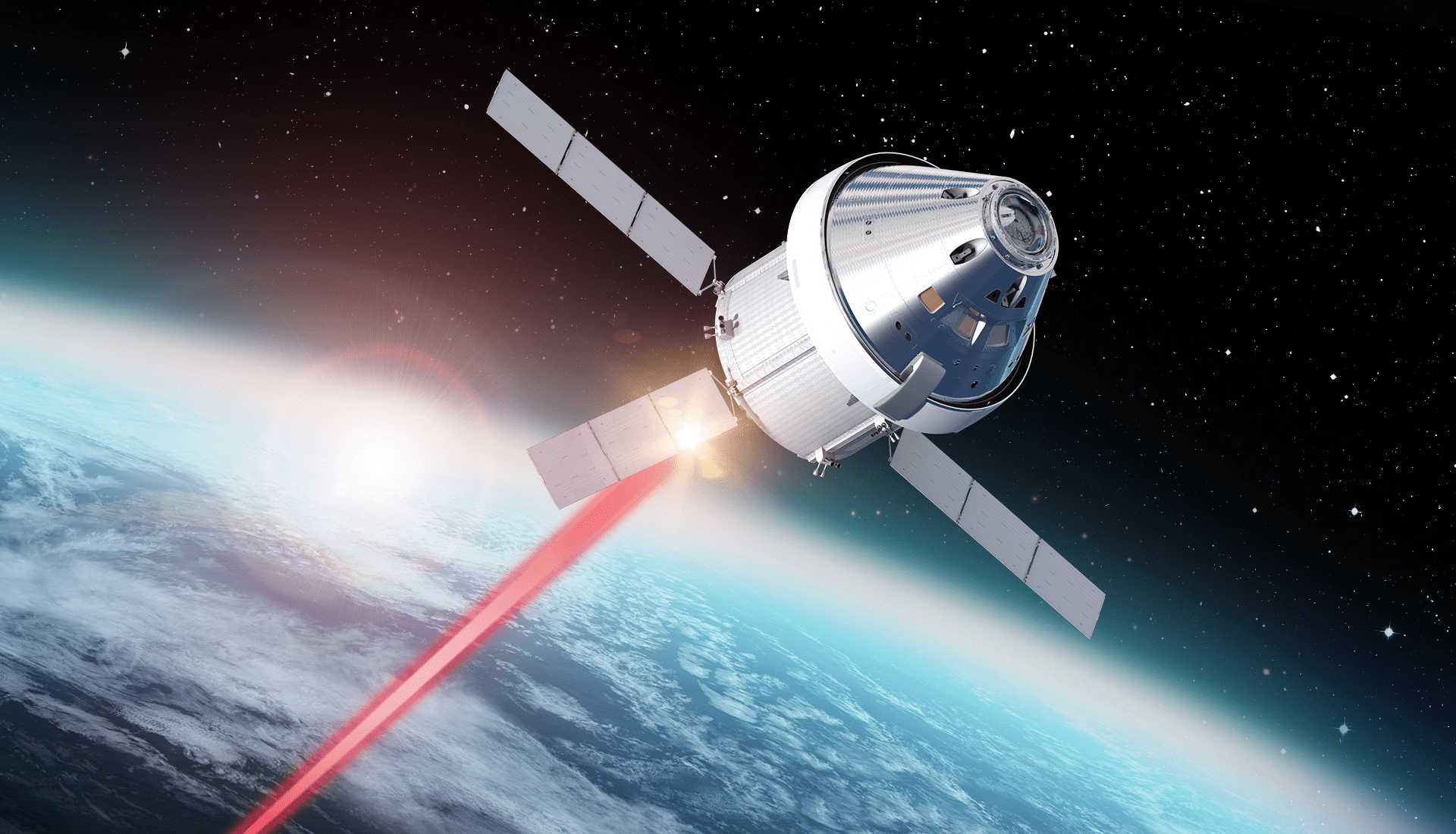Get Ya Wig Split
SENIOR MEMBER

- Joined
- Feb 22, 2017
- Messages
- 2,585
- Reaction score
- -2
- Country
- Location
Lasers Light the Way for Artemis II Moon Mission

Laser communications will empower Earthlings to enjoy high-definition images and video when astronauts return to the lunar region for the first time in almost 50 years.
“I’ve been with the project since the beginning, and it’s an honor to work with multi-disciplinary teams and create a revolutionary communications system,” said Michael Bay, Mission Systems Engineer for O2O. “Together, we will convert information into pulses of light.”
The Orion Artemis II Optical Communications System (O2O) leverages laser communications, also known as optical communications, for use on NASA’s cutting-edge Orion spacecraft. Launching in 2023, Artemis II will be the first crewed flight since the Apollo missions. During a roughly ten-day mission, Orion will loop around the Moon before heading back to Earth. O2O will make the mission one of the first to use laser communications technologies for crewed spaceflight.
With laser systems onboard, O2O will enable live, 4K ultra-high-definition video from the Moon, as well as enhanced science data transmission and more. In addition to video, O2O will transmit procedures, pictures, flight plans, communications, and voice between Orion and Earth.
“The idea is to have high-definition video transmissions to and from the Moon over laser links,” said Project Manager Steven Horowitz. “If you recall the images from the Apollo mission, they were grainy and difficult to see, but O2O will allow Artemis astronauts to send videos and images significantly more vivid and detailed. This is an incredible advancement in technology.”
Laser communications enable more data to be transmitted in a single downlink than comparable radio systems. Laser communications uses infrared light which packs data into significantly tighter waves, meaning ground stations can receive more data at once.
Instruments onboard Artemis II will collect data — images, videos, etc. — and transfer that information down to Earth from the lunar region. On Earth, two ground terminals, one located at the Jet Propulsion Laboratory’s Table Mountain Facility in Southern California, and the second at the White Sands Complex in Las Cruces, New Mexico, will receive and transmit the laser beams to and from Orion. Once the laser light is captured, systems within the ground terminal’s sensitive detectors will convert the information back to electrical data and forward the information on to the mission operations center, as well as scientists and researchers.
Laser communications systems provide higher data rates with reduced size, weight, and power requirements. A more compact communications system eliminates large gimballed antennas and deployable systems, leaving more room for science instruments. Weight reductions can result additional mission critical equipment, a less expensive launch, while reduced power allows batteries to last longer. These benefits will be crucial for exploration missions that generate lots of data and where space and power is at a premium.
In preparation for Artemis II, the O2O team will build the space terminal and integrate it into the Orion spacecraft. The space terminal consists of three major components:
• The optical module is comprised of a 4-inch telescope and two gimbals that point the telescope toward ground terminals on Earth.
• The modem converts mission data and commands to and from laser beams for communication via the optical module.
• The controller electronics contains a computer interfacing with the Orion flight avionics and custom interfacing electronics for control and the pointing of the optical module’s Telescope.
O2O will provide Orion and the Artemis missions with a “giant leap” forward in communications technology, allowing optical communications to join radio on NASA’s journey to the Moon, Mars, and beyond. With O2O enabling more data to reach Earth, NASA scientists can conduct further investigation and make more discoveries. The data collected by Artemis II will inform NASA’s future Artemis missions and help the agency establish a sustained presence on the Moon and, eventually, Mars.
